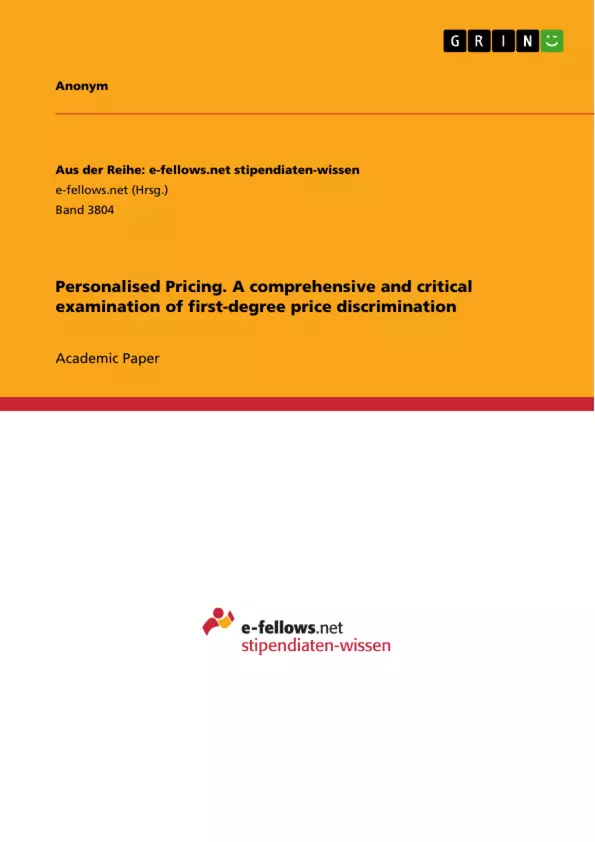This essay is about pricing, a core area of marketing. More specifically, it is about personalised pricing, which must not be confused with dynamic pricing.
Personalised pricing describes adjusting the price for every single customer individually, while dynamic pricing describes adjusting the price for all customers subject to external factors like the current demand as of this moment, for example. If an airline company for instance lifts prices on weekends because demand is stronger on weekends in general, this is dynamic pricing. If the airline company however increases the price only for one particular customer, because they find out, for instance, that the customer uses a certain computer type which makes him likely to be wealthier than other customers, this is personalised pricing. The underlying motivation of this essay is to critically assess how personalised pricing is carried out and whether it should be adopted.
Therefore, this essay takes the following approach and structure. Firstly, it is examined whether personalised pricing is legally permitted. Only if it is legally permitted to personalise prices it is worthwhile to further investigate this topic. Secondly, the customer’s willingness to pay is analysed. In order to personalise prices, it is necessary to know a customer’s exact willingness to pay. Thirdly, the topic of price elasticity is elaborated. It is necessary to assess whether profit is increased via increasing prices or decreasing prices and therefore higher demand. Fourthly, resulting retaliation as a consequence is explored. It is critically examined whether personalised pricing should be adopted, and empirical evidence is gathered to determine a retribution effect of personalised pricing which might end up making this practice unprofitable.
Inhaltsverzeichnis (Table of Contents)
- 1 Introduction
- 2 Personalised Pricing
- 2.1 Is it possible?
- 2.2 What's the customer's willingness to pay?
- 2.3 To increase or decrease the price?
- 2.4 Is it worth to adopt it?
- 3 Conclusion
Zielsetzung und Themenschwerpunkte (Objectives and Key Themes)
This essay aims to critically analyze the feasibility and potential benefits of personalized pricing. It explores the legal implications, the process of determining customer willingness to pay, the impact of price elasticity, and the potential consequences of implementing personalized pricing strategies.
- Legality of personalized pricing
- Customer willingness to pay
- Price elasticity and its influence on revenue
- Potential retaliation and its impact on profitability
- Empirical evidence and case studies of personalized pricing strategies
Zusammenfassung der Kapitel (Chapter Summaries)
- Introduction: This chapter introduces the concept of personalized pricing, differentiating it from dynamic pricing. It outlines the essay's objectives and structure, emphasizing the importance of critically assessing the feasibility and implications of personalized pricing.
- Personalized Pricing: This chapter delves into the core aspects of personalized pricing. It examines the legal permissibility of adjusting prices for individual customers, highlighting the importance of legal compliance in implementing personalized pricing strategies.
Schlüsselwörter (Keywords)
Personalized pricing, first-degree price discrimination, customer willingness to pay, price elasticity, revenue maximization, retaliation effect, empirical evidence, legal implications.
- Quote paper
- Anonym (Author), 2020, Personalised Pricing. A comprehensive and critical examination of first-degree price discrimination, Munich, GRIN Verlag, https://www.grin.com/document/1022855



